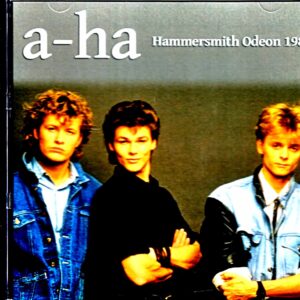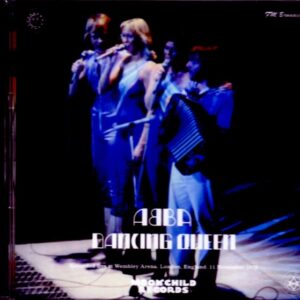Description
Many artists came to Japan from the early 1970s, which could be considered the dawn of Japanese rock, and at a time when information was limited, there were many opportunities to actually see foreign artists that you could only know about from books. It was like a dream-like time. Pink Floyd has come to Japan three times so far. Their first visit to Japan was in 1971, and they performed in Japan the following year in 1972. Surprisingly, there were no concerts in Tokyo during their first visit to Japan, and they only performed three times in total, twice in Hakone and once in Osaka. Fans living in Tokyo probably saw Pink Floyd on stage for the first time in 1972, on their second visit to Japan. Pink Floyd finished touring in support of the release of “Meddle” in November 1971, and then returned to recording their next album. The theme of his next work was to express “the madness that lurks within humans” through music. These difficult themes and complex compositions were elaborated many times before becoming “Madness”, but it was not released until March 1973. Moreover, tour dates are being scheduled during that time, and Floyd will make the choice to improve the level of “madness” through the tour. In fact, “Madness” was already performed on the already scheduled UK tour that began at the beginning of 1972. Although “Madness” has now solidified its status as a historical masterpiece, including chart action, at the time it was staged as a pure Pink Floyd new song. Most of the audience will be hearing “Madness” for the first time, but its worldview already gives off the impression that they are not ordinary people, and they can just watch with bated breath as the fantastic scenery unfolds on stage. It can be heard from the audience recording at the time. The 1972 performance in Japan was an extension of that series. Here again, the unreleased “Madness” has already been played throughout the entire album from the opening. What does the stage mean to an artist? Paul McCartney recalled, “Even during the Beatles era, songs like “She Loves You” were more popular than new songs.” It is easy to understand that the audience is looking forward to hearing the songs they have listened to on records until they are worn out live at the concert venue. Also, from the artist’s perspective, the intention was probably to directly check the reaction to the song by performing the new song. A tour was scheduled during the album’s production, and it seems that the intention was to reflect the reactions on stage during the recording process in the album’s production. Although this is a phenomenon caused by the time lag between recording and release, it is also thought to have been intended as a promotional effort to get people to purchase the album to be released later in order to listen to the new songs performed on stage again. This is probably why Led Zeppelin actively played songs from their new album, which had already been recorded but had not yet been released, on stage. However, in the case of Pink Floyd, there seems to be another reason that does not belong to any of the above. On the 1972 stage, the entire “Madness” was played from the opening, but the album was played in its entirety more than a year before its release. And although the “Madness” that can be heard in this work etc. is essentially the “Madness” that was released, frankly speaking, I can’t shake the impression that it is unfinished. It’s a different version that sounds like you’re listening to a studio outtake rather than an unfinished version. If calling it a different version is a bit of a misnomer, perhaps saying it hasn’t matured yet would be more accurate. Pink Floyd probably had a special awareness of “madness.” I imagine that they had an unconventional intention to improve their skill by performing repeatedly throughout the tour, bringing them closer to the perfect final form. When Fujiko Fujio visited Osamu Tezuka’s home for the first time when he was a student, he originally had a manuscript of 1000 pages for “The World to Come”, which was only 300 pages long, and the 700 pages he cut down supported this dense work. There is an episode where you will be surprised to know something. The reason that Pink Floyd’s “Madness” is such a dense piece of work with no gaps and a sense of tension that never lets up from beginning to end is the result of having spent a year maturing on stage in this way. I can understand things well. For posterity, only the album “Madness” will remain, but the fans who attended the live show at the time were fortunate enough to know that this long aging period supported that masterpiece. are. Part of that is the 1972 Japanese performance included in this work. In 1972, a total of six performances were held in Japan: two in Tokyo, two in Osaka, and in Kyoto and Sapporo. Even in today’s world of well-developed transportation networks, it’s a demanding schedule, with performances lasting five days in a row from Tokyo to Kyoto. This work includes the performance on the first day, March 6, 1972, at the Tokyo Metropolitan Gymnasium. As mentioned above, “Madness” is played in full in the first half. What is interesting is the content that Goro Itoi makes an announcement after the first half ends. Initially, it was introduced as “A Piece for Assorted Lunatics” on the stage in January, but the title has already changed to “The Dark Side Of The Moon” as of March. The point is that there is still no Japanese title for “Madness.” Furthermore, at the venue on the day of the performance, lyrics cards titled “The Other Side of the Moon – A Work for Mad Men” were distributed to the audience. Also, it is introduced as a new song that will be released in the UK in November. The reason that the release scheduled for November was delayed by four months to March of the following year was probably due to Pink Floyd’s obsession with perfection. The first half will play the entirety of “Madness,” followed by an announcement and a break, and the second half will feature songs that have already been released. “Blow the Wind, Call the Arashi” was a song that symbolized Pink Floyd to Japanese fans at the time, and it was featured prominently on tour posters. In addition, Eugene, Echoes, and Mystery will conclude the concert. In addition, the second half of Disc 2 contains another source from the same day that was aired on the radio at the time. It’s interesting that after the broadcast, the DJ, probably thinking it was a bad idea, said, “What kind of band is this from which country?” This may also be a sign of a more generous era. From Pink Floyd’s 1972 performance in Japan, a complete recording of the first day, March 6th, at the Tokyo Metropolitan Gymnasium. In the second half, another source that was aired on the radio at the time is also included. METROPOLITAN GYMNASIUM TOKYO March 6, 1972 DISC ONE 01. Speak To Me 02. Breathe 03. On The Run 04. Time 05. Breathe (Reprise) 06. The Great Gig In The Sky 07. Money 08. Us And Them 09. Any Color You Like 10. Brain Damage 11. Eclipse 12. Announcement 13. One Of These Days 14. Careful With That Ax, Eugene DISC TWO 01. Echoes 02. Announcement 03. A Saucerful Of Secrets RADIO BROADCAST SOURCE 04. Speak To Me 05 . Breathe 06. On The Run 07. Time 08. Breathe (Reprise) 09, The Great Gig In The Sky 10. Money 11. Us And Them 12. D.J. Announcement







Reviews
There are no reviews yet.